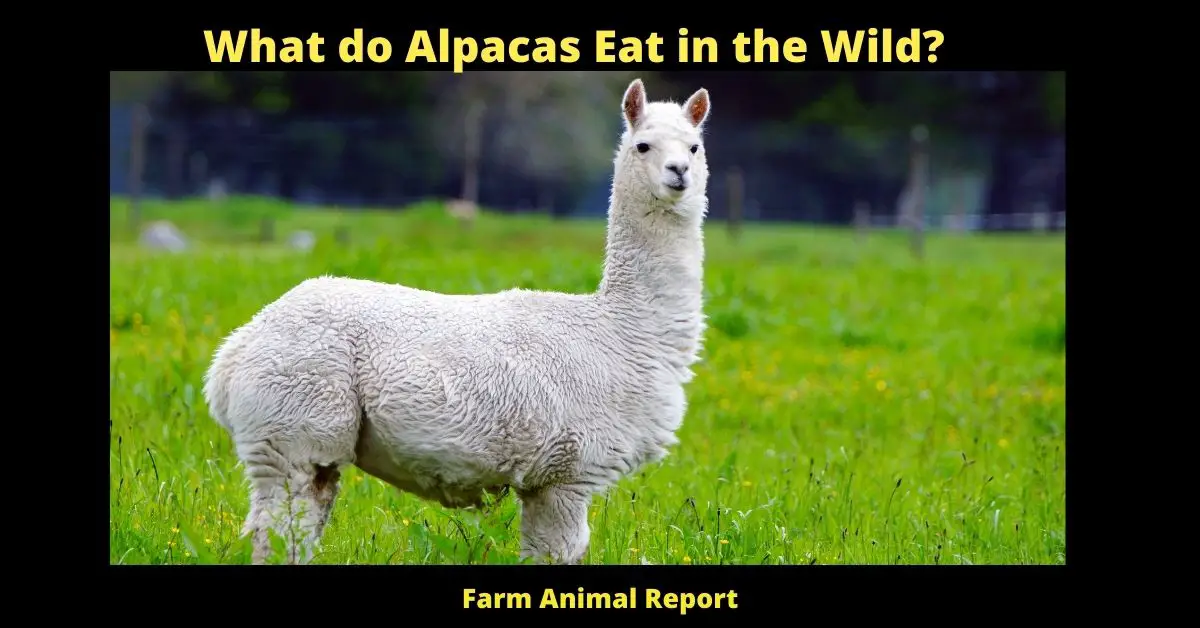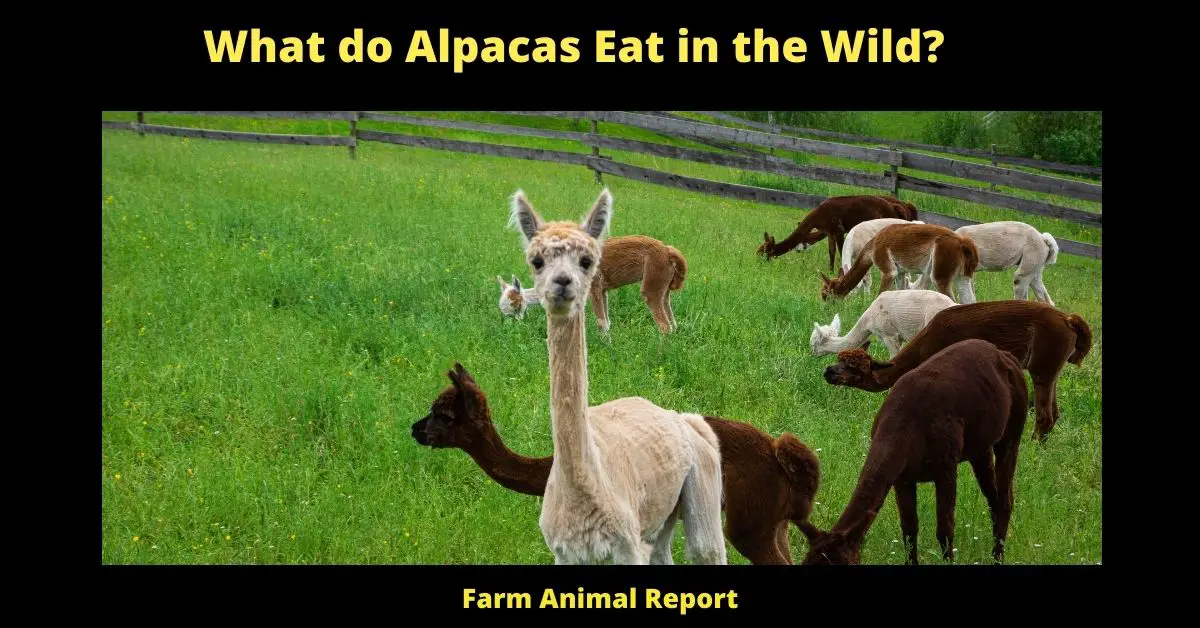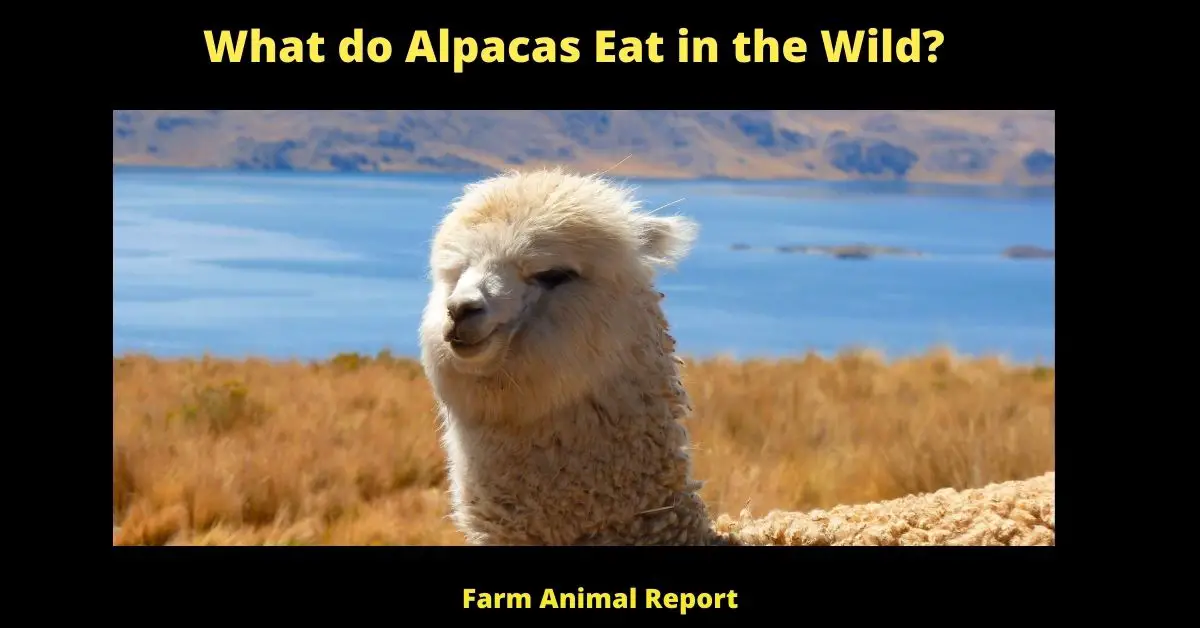They Eat Grass, Leaves, Wood Bark, and Stems. Alpacas are herbivores, meaning they only eat vegetation. Alpaca’s diet often consists of roughage like grass but its stomach is three-chambered and can also include leaves wood bark or stems as well! Just like other ruminants, these animals have a special digestive system that efficiently breaks down the food into nutrients. Today there are only Domesticated Alpacas
What do Alpacas Eat in the Wild? – Without Human Provision
Today there are no Wild Alpacas.
Alpacas are very unique animals. They are domesticated, but they were originally found in the wild. Alpacas eat grass and leaves in their natural habitat, so what do alpacas eat in captivity? The answer is not much different than it would be if they were living outside. What do Alpacas Eat?
Jump to Alpaca (What Do Alpacas Eat?)**DIET**

The key to an alpaca’s diet is to provide them with a variety of hay and small amounts of grain. If you give your pet alpaca too many treats (like fresh fruit or vegetables)
Alpacas that have no Human Providing Food will eat
- Grass
- Leaves
- Bark
- Roots
- Stems
Alpacas are Foragers
Summer – Their diets will change with the seasons. They will eat more grass and other plants in the summertime, Grass and fresh foliage are abundant.
Fall – As the weather turns cooler, alpacas will eat fattier foods to maintain their body heat. They may start eating bark and other woody plants in preparation for wintertime when food is scarce.
Winter – During cold months Alpacas have a greater need for proteins so they often seek out bulbs, leaves, or roots
Alpacas are herbivores, meaning they eat only plants
Herbivores bodies are designed for plant-eating
- Their Teeth – Are specifically for slicing and chewing vegetation
- Their Stomachs – Have four chambers that help them digest their food properly
- Alpacas eat a variety of things in the wild, but mostly grass
- They will also eat leaves, bark, woody plants, and roots depending on the season.
- In captivity, alpacas should have access to hay and small amounts of grain
- The grass is the main food for alpacas in their natural habitat. They can also eat leaves, bark, woody plants, roots, and stems depending on the season. In captivity, they need to be provided with hay and a limited amount of grain as treats or supplements.
They eat Grasses and Leaves from the Ground as well as Shrubs that Grow Close to the Ground
When an alpaca grazes it takes short bites and keeps its head down
It usually feeds for about an hour, then moves to another spot
They tear the grass with their incisors and chew it with their molars
Their digestive system is specially designed to extract nutrients from plant food sources. Alpacas are able to convert cellulose into glucose, which is the sugar that provides them with energy. This process happens in their three-chambered stomachs.
In areas where there is no Vegetation, they will eat Cactus or Tree Bark
Alpacas are mostly herbivores and their diet consists of grasses and leaves. In areas where there is no vegetation, they will eat cactus or tree bark. At times of drought and sparse vegetation, they may resort to eating less appealing items. They also consume water regularly – about a gallon per day. Alpacas are able to survive on less than 50% of the moisture that cows require.
Also, What Do Alpacas Eat in The Winter?
The Alpaca’s Stomach has a Three-Chamber System for Digesting food Efficiently
The Three Chambers of an Alpacas Stomach are:
- The Fore-Stomach – This is where the food is broken down by bacteria.
- The Reticulum – This is a special stomach that helps with breaking down plant fiber.
- The Abomasum – This is the true stomach where acids and enzymes digest the food.

Also What Do Baby Alpacas Eat?
Final Thoughts – What do Alpacas Eat in the Wild?
In Summary, Alpacas Eat
Grass
Leaves
Bark
Roots
Stems
Herbivores’ bodies are designed for plant-eating and their teeth are specifically for slicing and chewing vegetation. Their stomachs have four chambers that help them digest their food properly. In captivity, they should have access to hay and small amounts of grain. Alpacas eat grasses and leaves from the ground as well as shrubs that grow close to the ground. They tear the grass with their incisors and chew it with their molars, which is how they digest food properly in three chambers of an alpaca’s stomach. An adult male alpaca can eat up to 15 pounds of food per day. In areas where there is no vegetation, they will eat cactus or tree bark.


